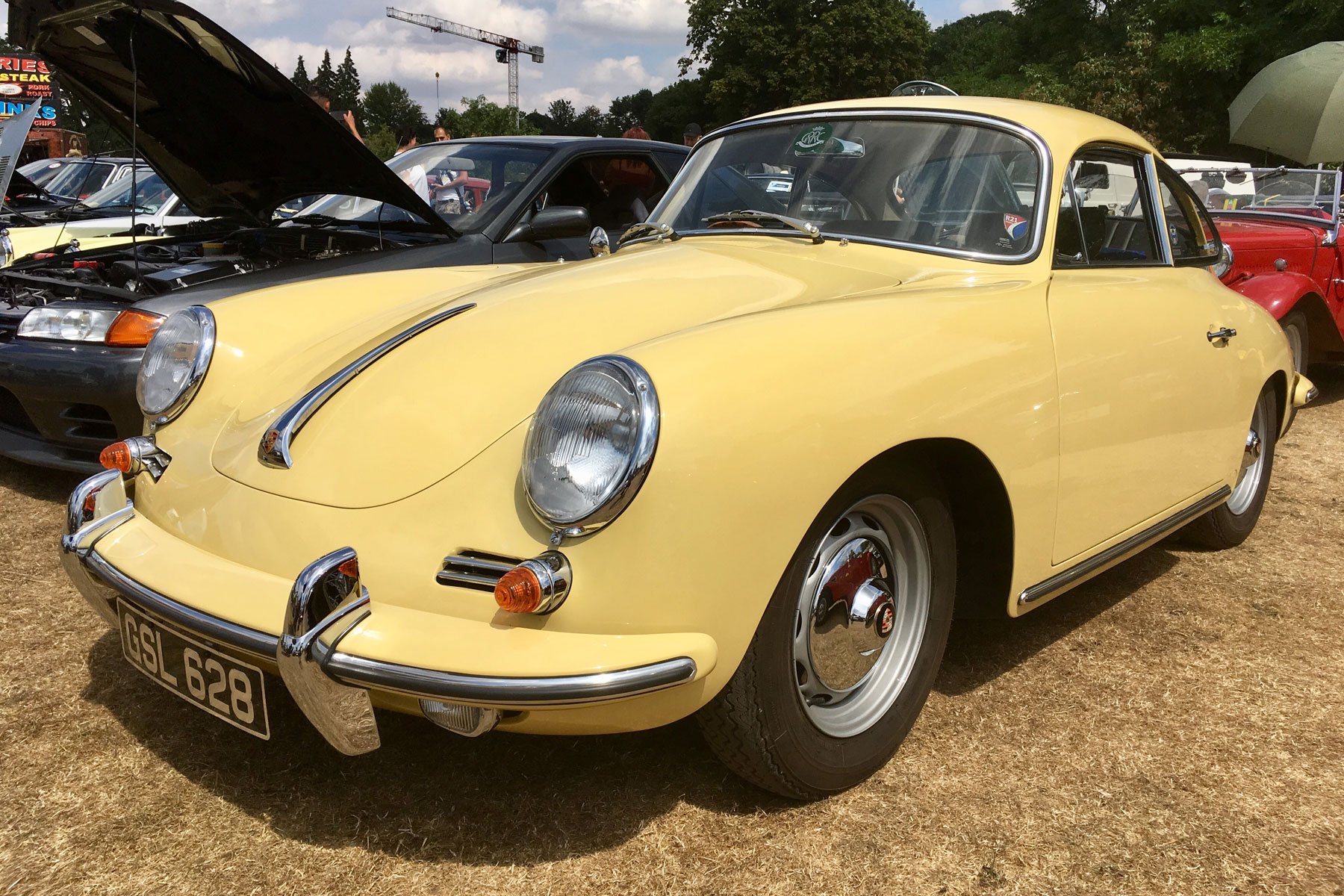
For one Wednesday every July, the small Hertfordshire town of Harpenden is invaded by classic cars. This is Classics on the Common: the UK’s biggest – and certainly most eclectic – ‘week day’ car show, and it takes place right on Motoring Research’s doorstep.
This year was the 25th anniversary of CotC and a new rule was introduced: vehicles, other than motorcycles and scooters had to be 26 years or older – i.e. built in 1992 or before. Oddly, this didn’t seem to apply to those who turned up in nearly-new Ferraris, but still…
The sheer variety of cars on Harpenden common is what makes this show special. We spotted everything from Austin Metros to a Lamborghini Countach. There were also plenty of American cars this year: hot rods, yank tanks, V8 muscle cars and more. In short, there was something for everyone.
Video: Classics on the Common 2018
Below, each member of the MR team selects their favourite three cars from the show and explains their reasons for choosing them. The writers in question are Richard Aucock, Gavin Braithwaite-Smith, Bradley Lawrence, John Moroney, John Redfern and Tim Pitt.
Let us know if you agree with our choices in the comments below.
Tim: Volkswagen Golf GTI Mk1
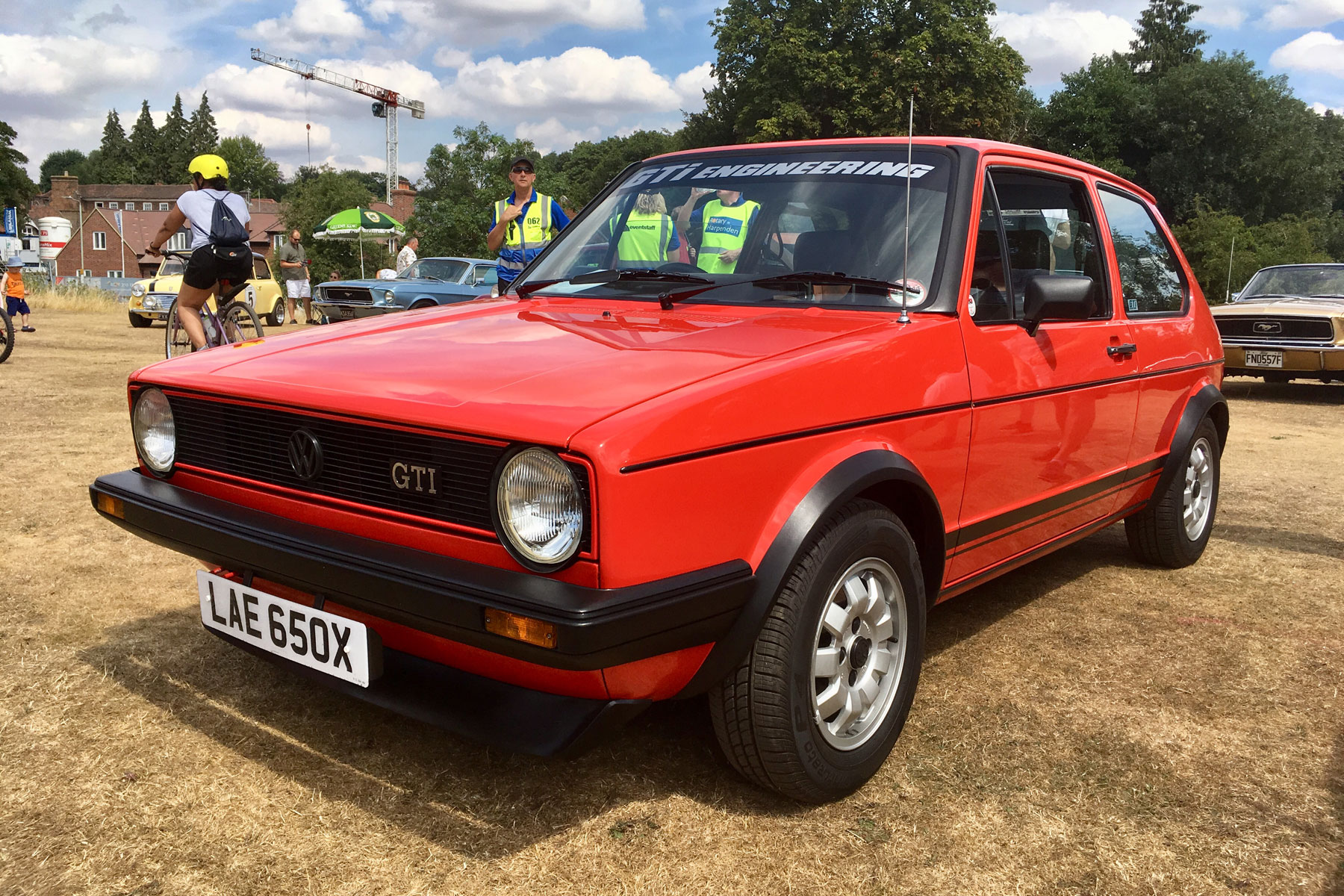
When it comes to hot hatchbacks, there’s nowt more iconic than a Mars Red Mk1 Golf GTI. There are also nostalgic reasons behind my choice, however. Back in the early 2000s, I had an X-reg 1.6 GTI that looked exactly like this. It wasn’t the best car I’ve ever owned, but it’s the one I remember most fondly.
Today is Harpenden’s annual car event, Classics on the Common. Motoring Research’s Bradley is out and about all afternoon filming the fantastic cars.#ClassicsOnTheCommon
?@bradlawrence__ pic.twitter.com/Bjas5nkUKZ
— Motoring Research (@Editorial_MR) July 25, 2018
This particular GTI is a bit special, having been converted to ‘RE1850’ spec in-period by the legendary GTI Engineering. The complete conversion cost £3,935 and included a heavy-duty clutch, four-branch exhaust manifold and Sachs dampers.
Richard: Dodge Challenger R/T

This insanely cool Dodge was one of the many American cars on show at Classics on the Common. It’s the perfect colour, the perfect spec, and the condition is pretty much perfect as well. What’s not to love?
Particularly as, being an R/T, it has a 383 cu in (6.28-litre) V8 under the bonnet (sorry, hood). What this means for fuel bills here in the UK doesn’t bear thinking about, but the Magnum V8, rated at 335hp, undoubtedly delivered the muscle to go with its muscle car appearance, so it’s worth hitting the limit on the credit card.
This is a really early Challenger; the model was only introduced in 1970, as a bigger and more luxurious sister car to the Ford Mustang-fighting Charger. The sheer originality of this one proves the owner’s very much in love with it, and rightly so. Oh, and in case you’re wondering, R/T stands for road and track. Call it a track-day special ahead of its time.
John M: Ford Galaxie 500 XL
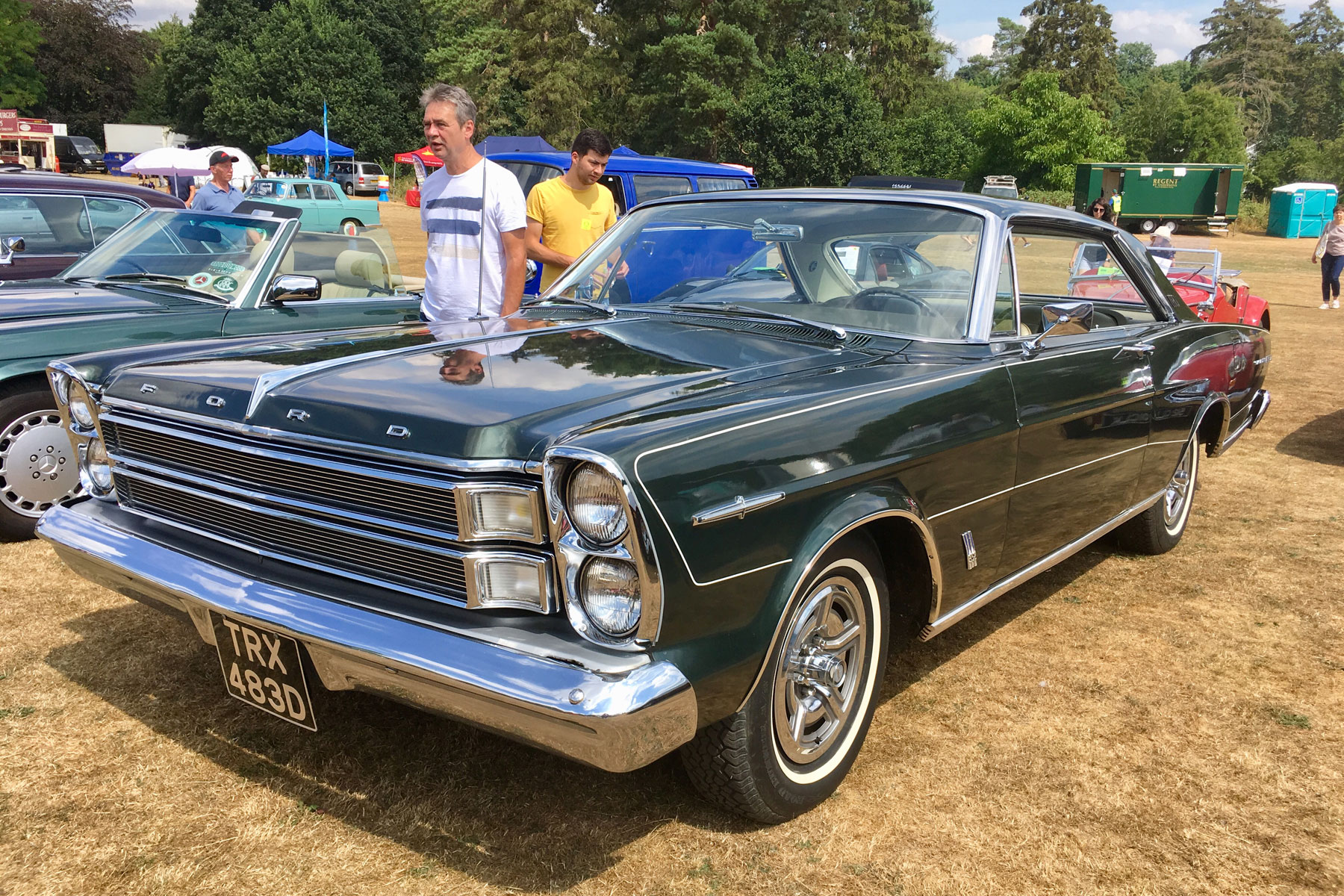
The American horsepower wars were raging by the mid-1960s, and there was no replacement for displacement. At the bottom of Ford’s full-size models were the sparsely-appointed six-cylinder grocery getters, but near the top of the line sat the sporty and luxurious Galaxie 500 XL.
In Ford-speak, ‘XL’ meant a standard V8, bucket seats and a console, along with special trim and interior touches. Power choices for 1966 ranged from the 200hp, 289-cid Challenger V8 all the way to the deliciously bonkers 425hp Cobra 427.
The first cars have arrived outside MR HQ in Harpenden for Classics on the Common.
Love these Escort RS2000 twins. pic.twitter.com/PhPdhzFgJ0
— Tim Pitt (@timpitt100) July 25, 2018
Even with an emphasis on performance, the Galaxie XL was billed as superior to the quietest cars Europe had to offer. This particular example looks factory-fresh in Ivy Green and pinstripes, with Rallye wheel covers and chrome everything. It’s equipped with the 352-cid Interceptor V8, a name that evokes nothing but high-speed car chases and endless desert highways. Let’s cruise.
Bradley: Ferrari 458 Speciale Aperta
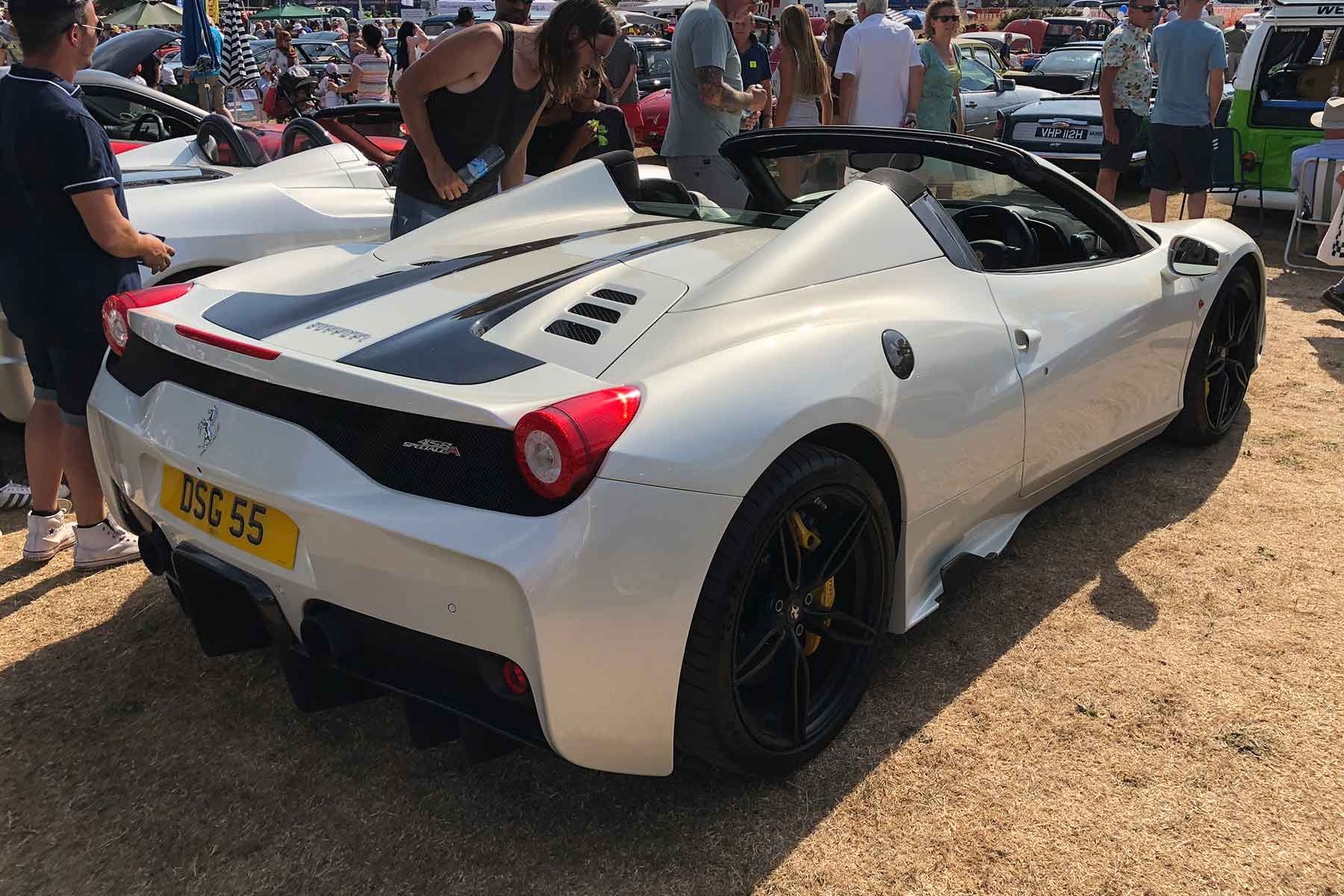
One esteemed Ferrari expert told us the 458 Speciale is the greatest road-going Ferrari ever made. And who are we to argue?
This, however, is no ‘ordinary’ Speciale, but a one-of-499 Aperta – with a folding metal hard-top and a top speed of 199mph (presumably with the roof closed). As with most limited-edition Ferraris, the Aperta is already worth more than list price when new in 2014. One example recently sold for in excess of £600,000.
Gavin: Vauxhall Cavalier SR
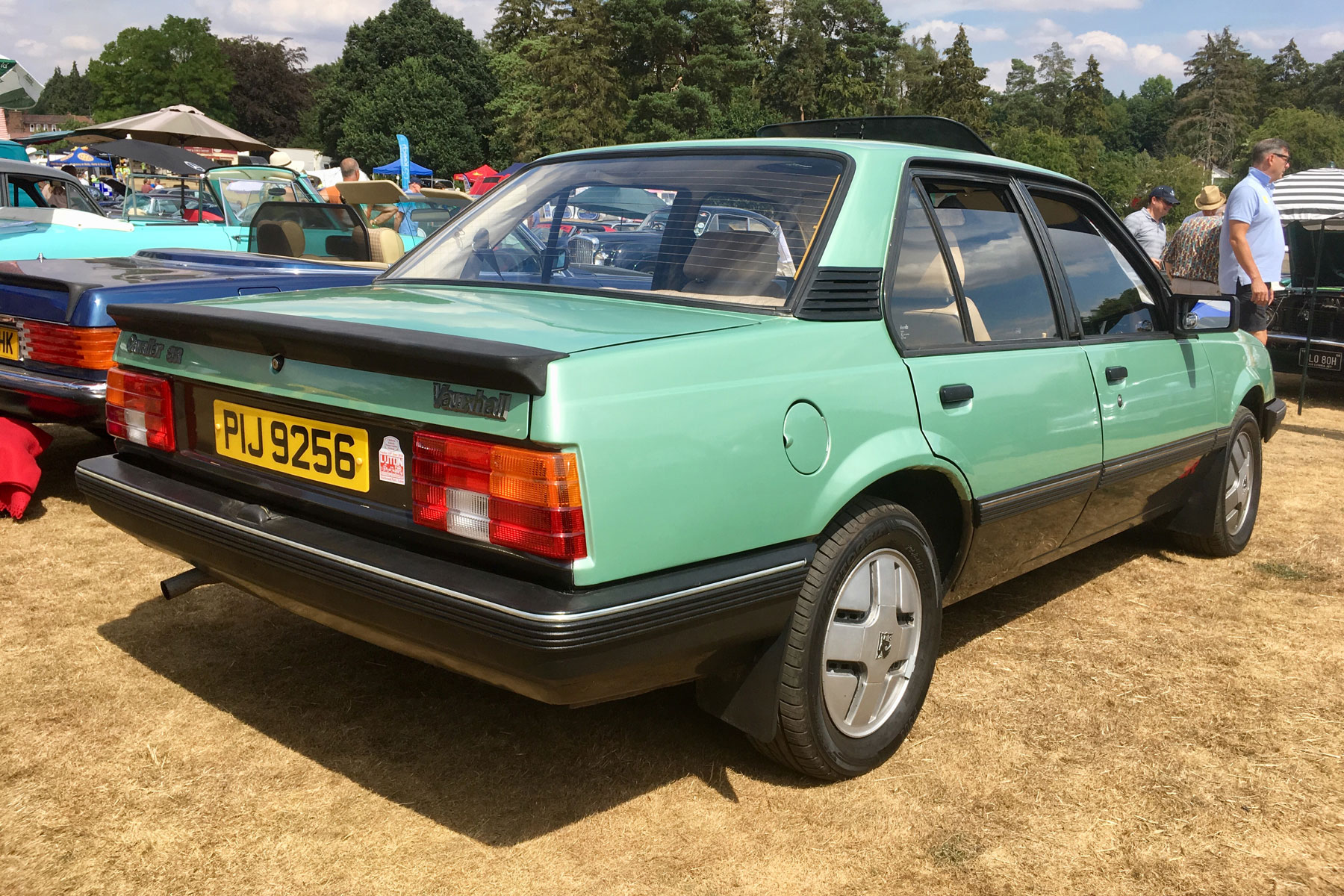
The second-generation, front-wheel-drive Vauxhall Cavalier – or ‘Lutonian Ascona’, as Motor Sport labelled it – arrived in 1981, replacing the old rear-wheel drive-model. The sporting SR was powered by a new 1.6-litre ‘Family II’ engine and featured a two-tone paint job, ‘Highland Check’ Recaro seats, a full set of dashboard instruments and a thick-rimmed three-spoke steering wheel.
It was produced for a single year before a 1.8-litre fuel-injected Cavalier SRi was launched, making the SR extremely rare. This 1982 example is one of 20 in the UK – four registered/16 SORN – and is wearing its original Northern Ireland registration, albeit with new plates.
John R: Ford Econoline Van
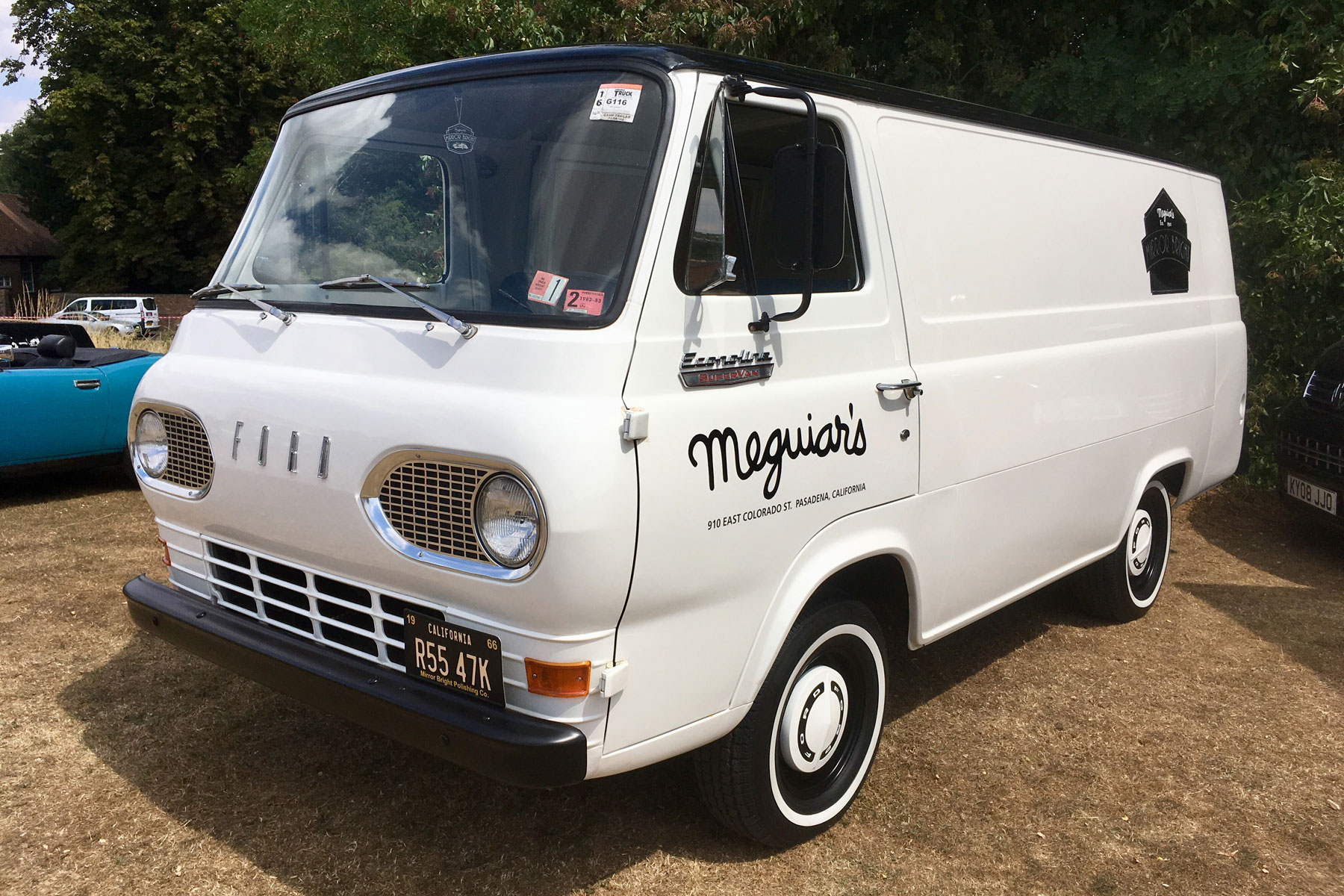
Feel free to call me a hipster, but there is something irrepressibly charming about the Econoline from the 1960s. Not only did it begin one of Ford’s longest-running nameplates – spanning 56 years – it also kick-started modern van design in the USA. Intended to compete with the Volkswagen Type 2, the Econoline placed the engine between the front seats to create a flat and spacious rear cargo area.
Ford offered various bodywork options, including a pick-up truck and a camper variant to compete with that pesky Volkswagen. Due to the layout chosen by Ford, only a straight-six engine would fit, meaning there was no V8 power from the factory. That hasn’t stopped the Econoline from being the choice for customisers, though – and mine should I decide to open an artisan coffee shop one day.
Tim: Ford Lotus Cortina
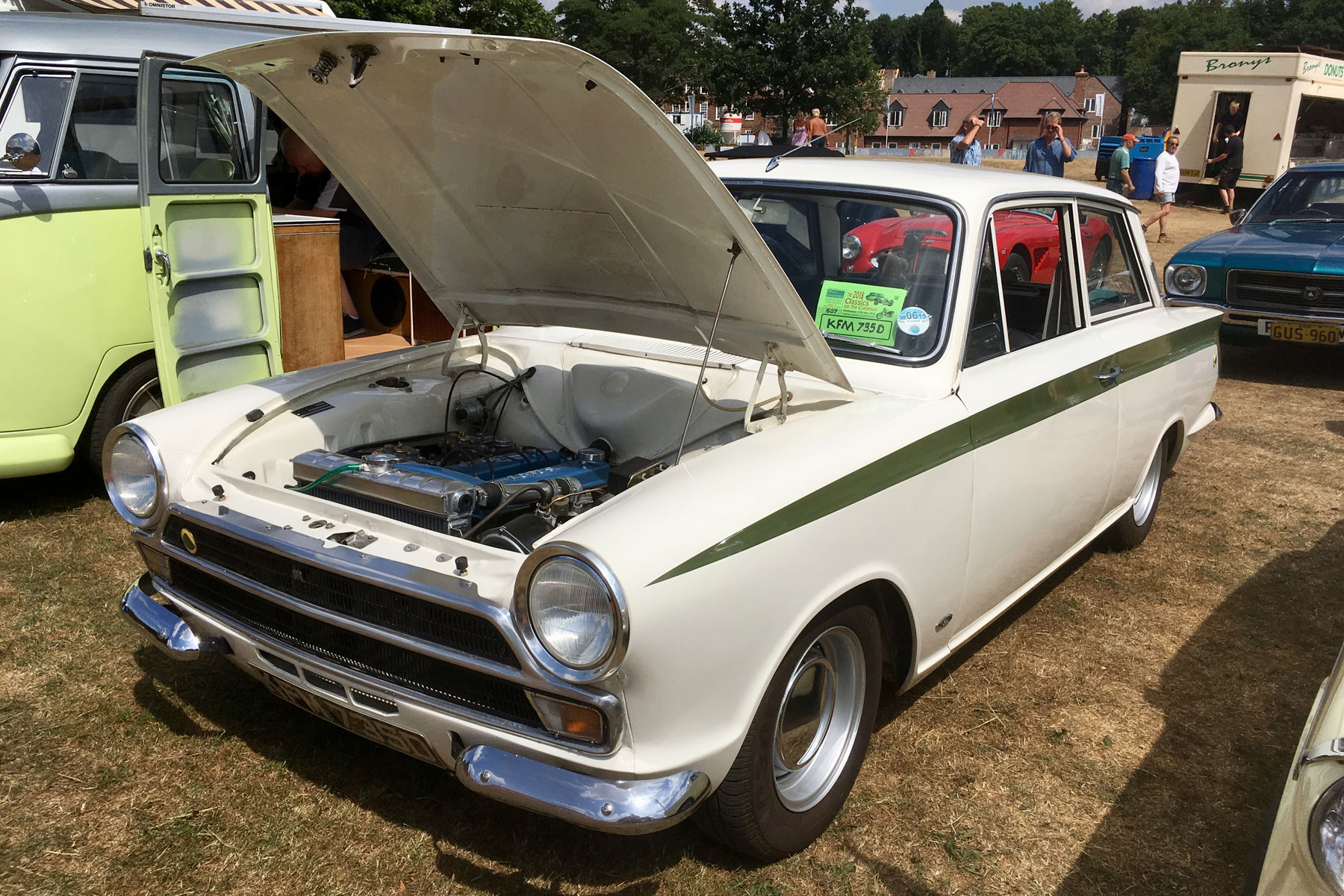
This one’s a sentimental choice, too. Last year, Motoring Research recently helped reunite a reader with the Lotus Cortina he’d owned four decades ago. While watching ‘Car SOS’ on TV, Rob Jones spotted ‘his’ Cortina in Ford’s heritage workshop. He called us, we called them, and the result was a visit to Dagenham and a special day for a Ford fan.
The Lotus Cortina is arguably the first fast Ford. Its 106hp Lotus engine, close-ratio gearbox and lightweight alloy panels meant 0-60mph in 9.9 seconds and a top speed of 108mph. A legend on both the road and the racetrack, it’s now a sought-after classic.
Richard: Porsche 911T
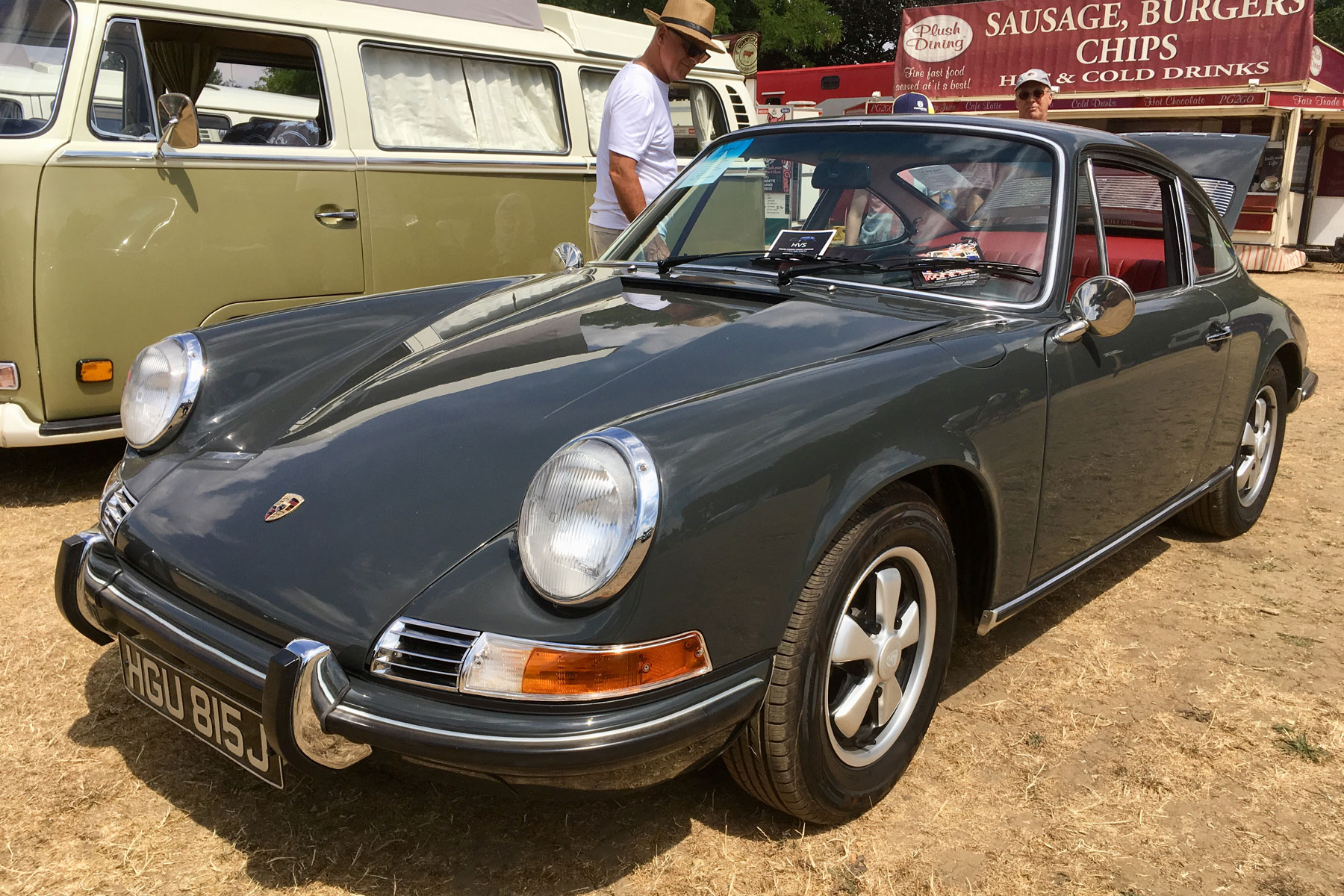
What I wouldn’t do to own a 911 as period as this one. Built in 1971, it’s a matching-numbers car, recently restored to concours standard so it looks showroom-fresh both outside and in. If I owned it, I would treasure it and consider it a life goal achieved.
Classics on the Common: the classsic car show on @Editorial_MR’s doorstep! #ClassicsOnTheCommon pic.twitter.com/cyolFztQnw
— Richard Aucock (@richardaucock) July 25, 2018
I could do, too: there was a note in the windscreen saying it was for sale. Just after we finished filming our video, the owner came up to me. If I liked it that much, it could be mine – for £110,000…
Bradley: Volkswagen Camper T2
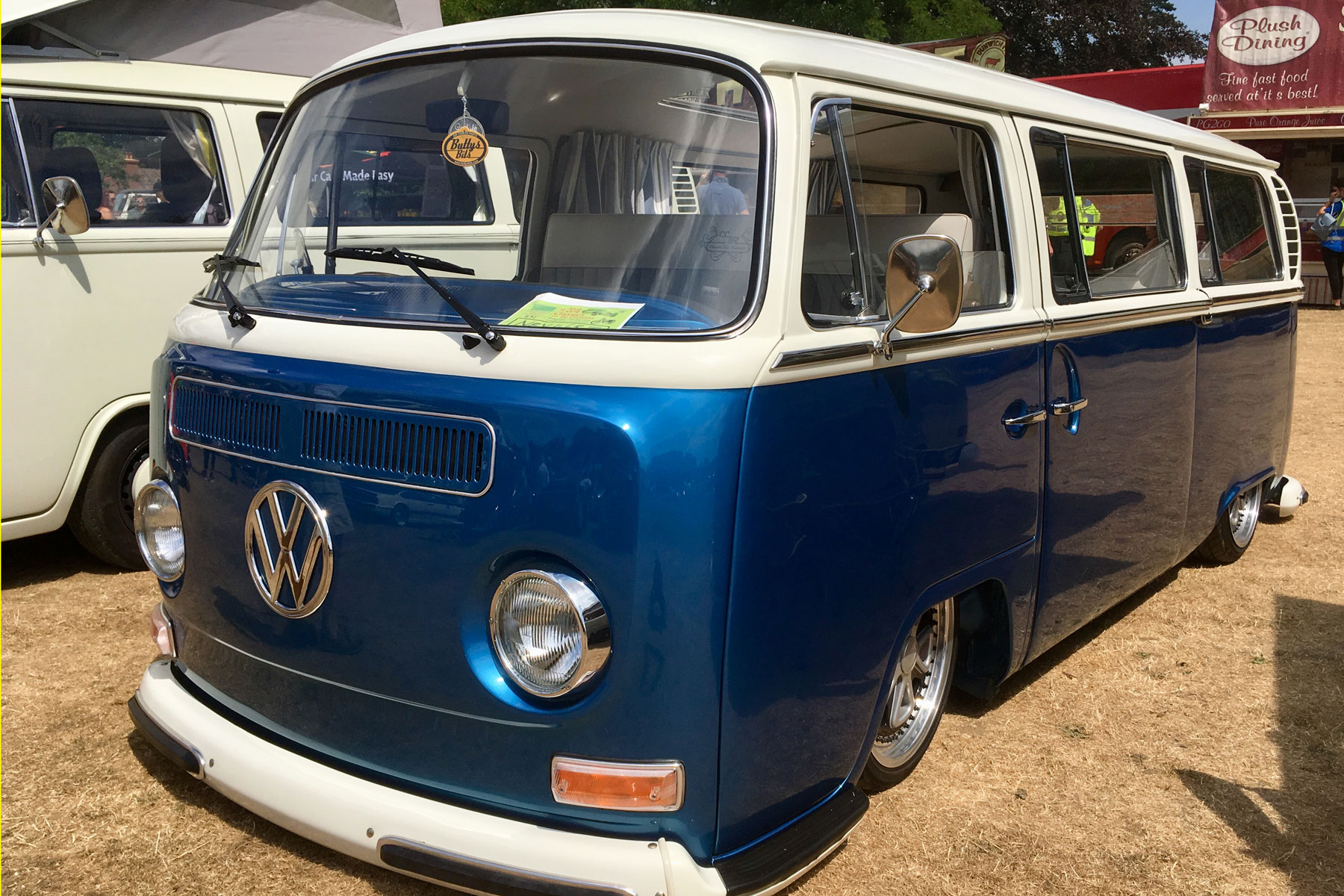
A boiling hot day at Classics on the Common makes you want to flee the Home Counties and head for the seaside. And what better car for the job than a Volkswagen camper? Since the sixties, this air-cooled icon has been the minibus of choice for surfers, beach bums and – nowadays – well-heeled enthusiasts.
This T2 camper looks fairly innocuous until you spot its stance; air suspension means it’s absolutely on the floor. Thankfully, the ability to ‘pump up’ to a semi-sensible ride height means it can actually exit the field.
John M: Ford LTD
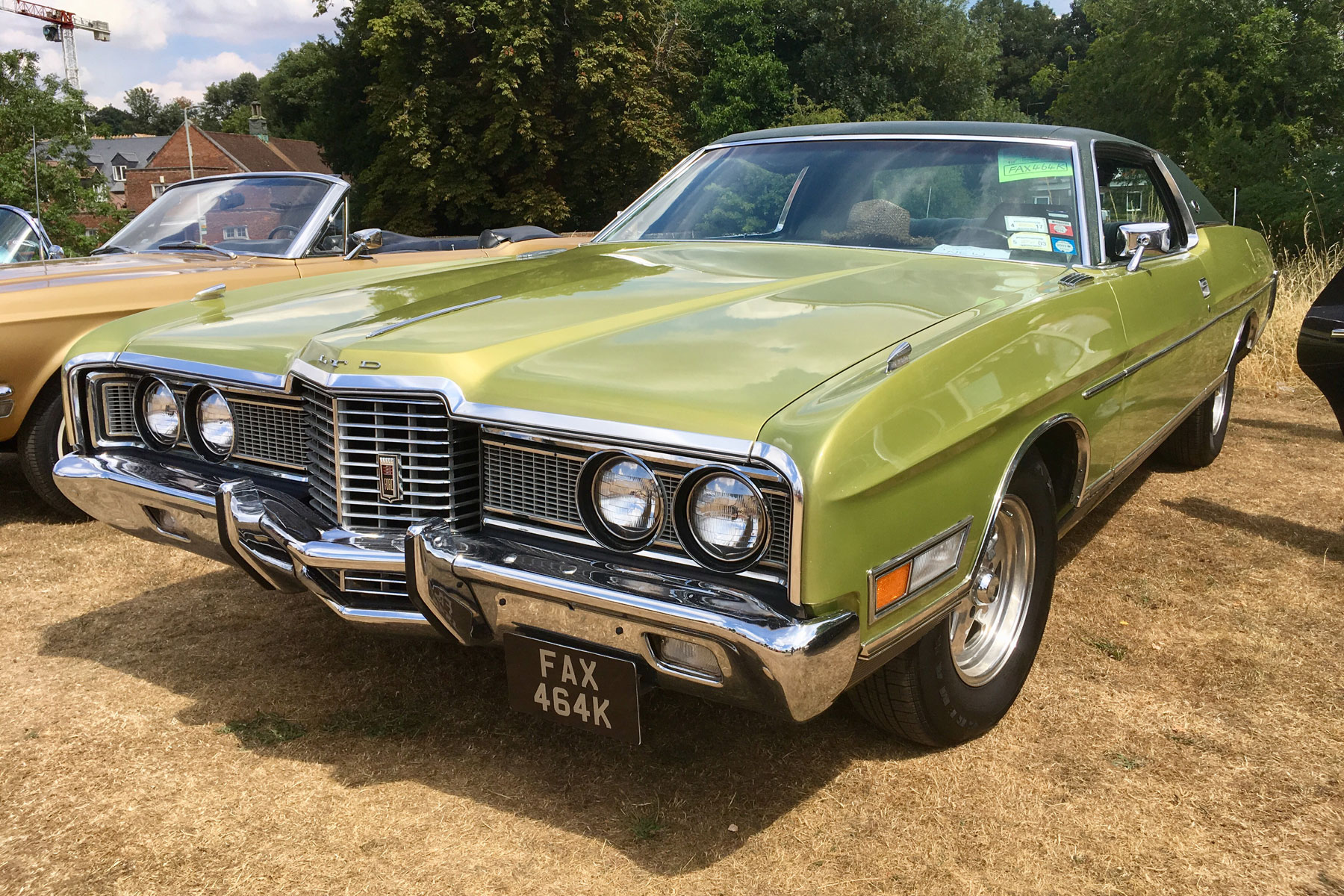
Accustomed as Europeans are to reasonably-sized automobiles, it might be hard to imagine just how immense this 1972 Ford LTD really is. If you were to stretch a line of LTDs from central London through Paris, Moscow, Mumbai, Hong Kong, and so on all the way to the sun, the total number required would be two.
As a classic example of the American ‘personal luxury’ automotive ethos of the 1970s, the LTD sported acres of chrome, a vinylised faux-landau top and a mix of heraldic crests and laurel wreaths for emblems. Inside, more vinyl covered every conceivable surface: bench seats, doors, dash and roof. Even the wood trim was vinyl.
Another absolute minter of a Mk1 GTI.
This one’s a late-model 1.8 Campaign (spot the green-tinted glass). pic.twitter.com/uspKIJNPaS
— Tim Pitt (@timpitt100) July 25, 2018
Under the hood, buyers had the choice of a 5.8-, 6.6-, or 7.0-litre V8s, the most powerful of which produced just 208hp in 1972.Even the most economical version only managed 15.2mpg.
While it may sound like we’re being harsh on this beautiful LTD, nothing could be further from the truth. What we are doing is illustrating the level of love and dedication this car’s owner clearly feels towards the vehicle. Bravo!
Gavin: Mitsubishi Colt Cordia Turbo
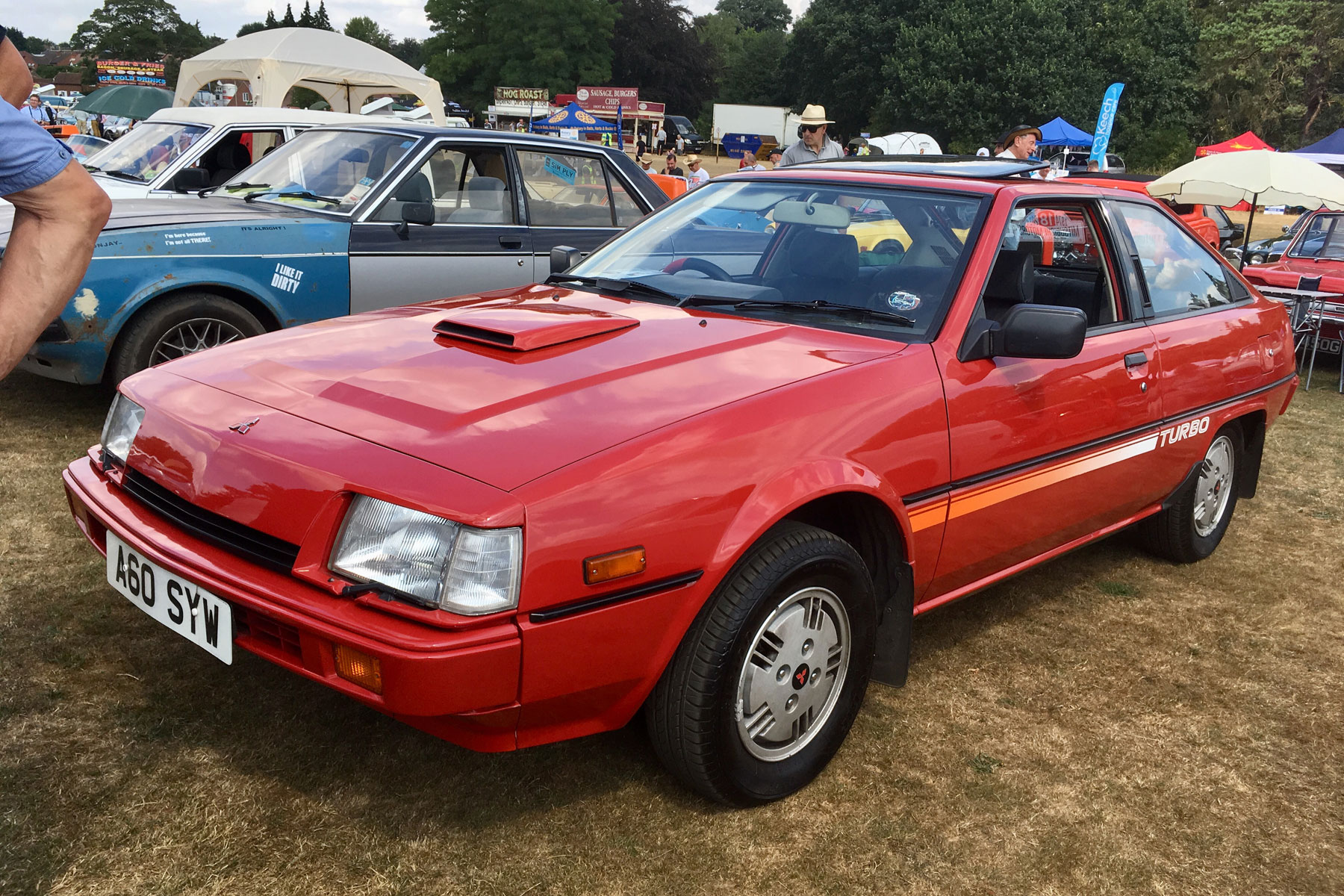
To buy a Mitsubishi Colt Cordia Turbo new, you’d have needed to look beyond some of the more established members of the coupe set, such as the Ford Capri, Renault Fuego, Toyota Celica, Opel Manta and Honda Prelude. It was powered by a turbocharged engine, mated to what was essentially an eight-speed gearbox. Or rather, a four-speed unit with a ratio selector for ‘Power’ and ‘Economy’.
If a buyer managed to resist the lure of a more familiar name, they’d have been rewarded with a 1.6-litre car with the performance of a 2.0-litre (0-60mph in nine seconds). It also had lower drag coefficient than a Porsche 928, fuel economy in the mid 40s and more toys than the Generation Game conveyor belt. Cool thing.
John R: Audi Quattro
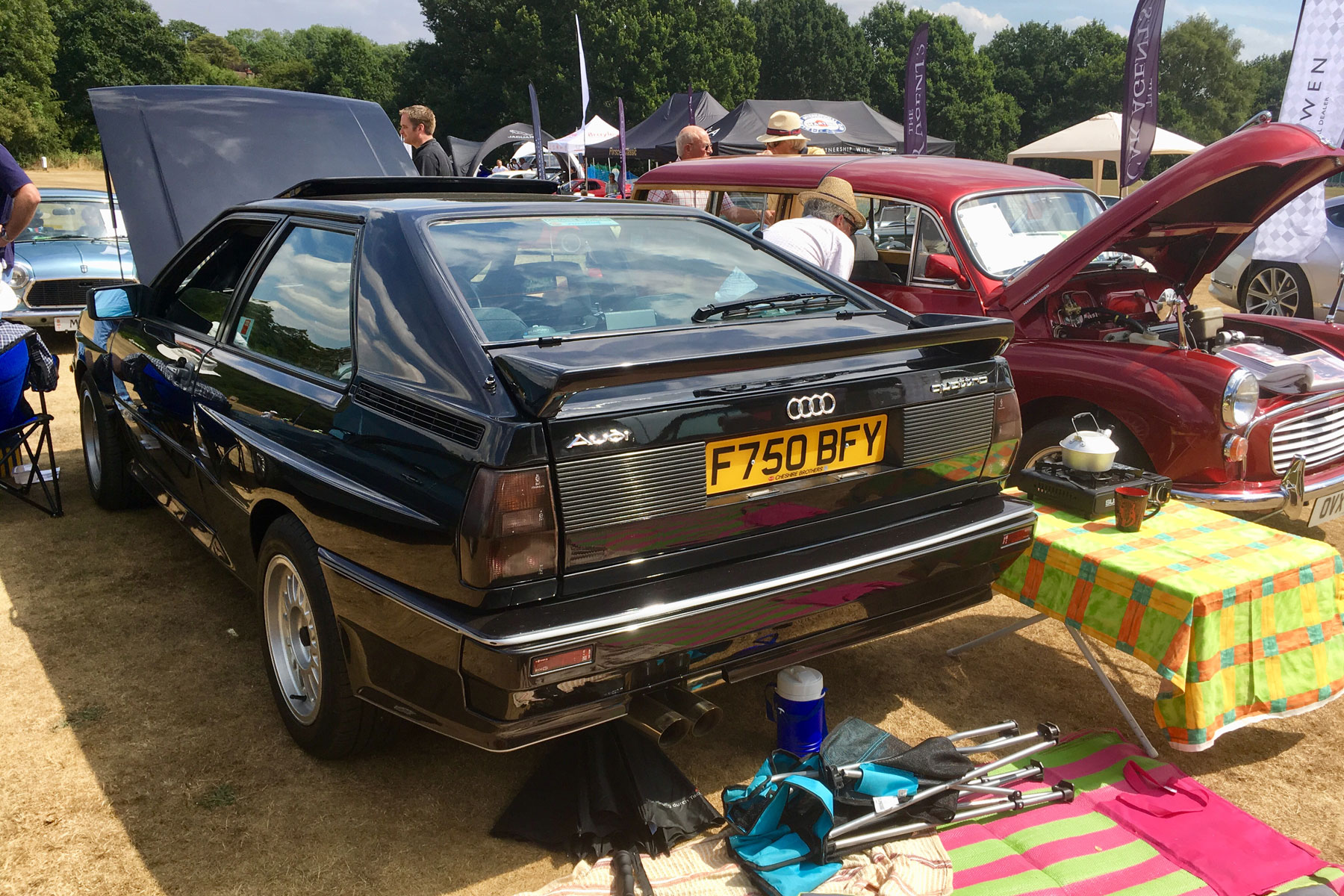
As Audi launches another new Q3 SUV, it’s easy to sometimes forget where the four-wheel-drive roots of the brand come from. But here they are: the original Quattro. First launched in 1980, the Quattro combined a five-cylinder turbocharged engine with Audi’s eponymous 4WD system, offering performance whatever the road conditions might be.
It also made for a highly effective rally car, with the Group B Quattros gaining huge horsepower and gigantic wings. This late-model road car underwent a thorough restoration, having been left abandoned in a field by its previous owner. A bare metal respray in Satin Black was matched with a rebuild for the 2.2-litre 200hp engine, bringing it back to full, warbling glory.
Tim: Ginetta G15
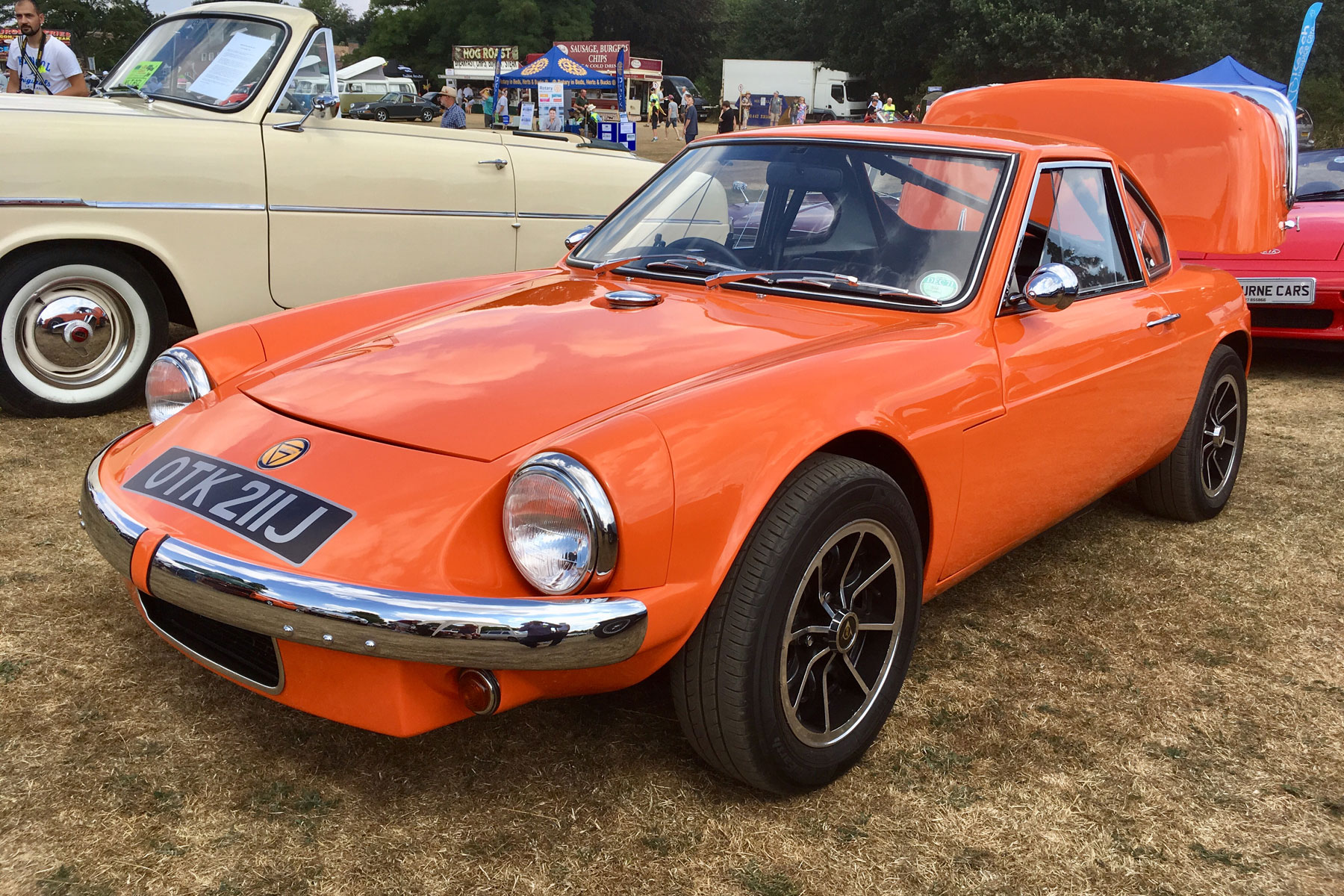
This one’s my wildcard. You’ve possibly never heard of Ginetta, but this tiny British company has been building compact, lightweight and affordable sports cars since 1958. Think of it as the underdog Lotus (which, in turn, is the underdog Porsche) and you get the idea.
The pretty G15 seen here was built from 1967 to 1974. Its tiny glassfibre body clothes a tubular steel chassis and 875cc Hillman Imp engine. Most were sold in kit form.
Richard: Ford Escort XR3i
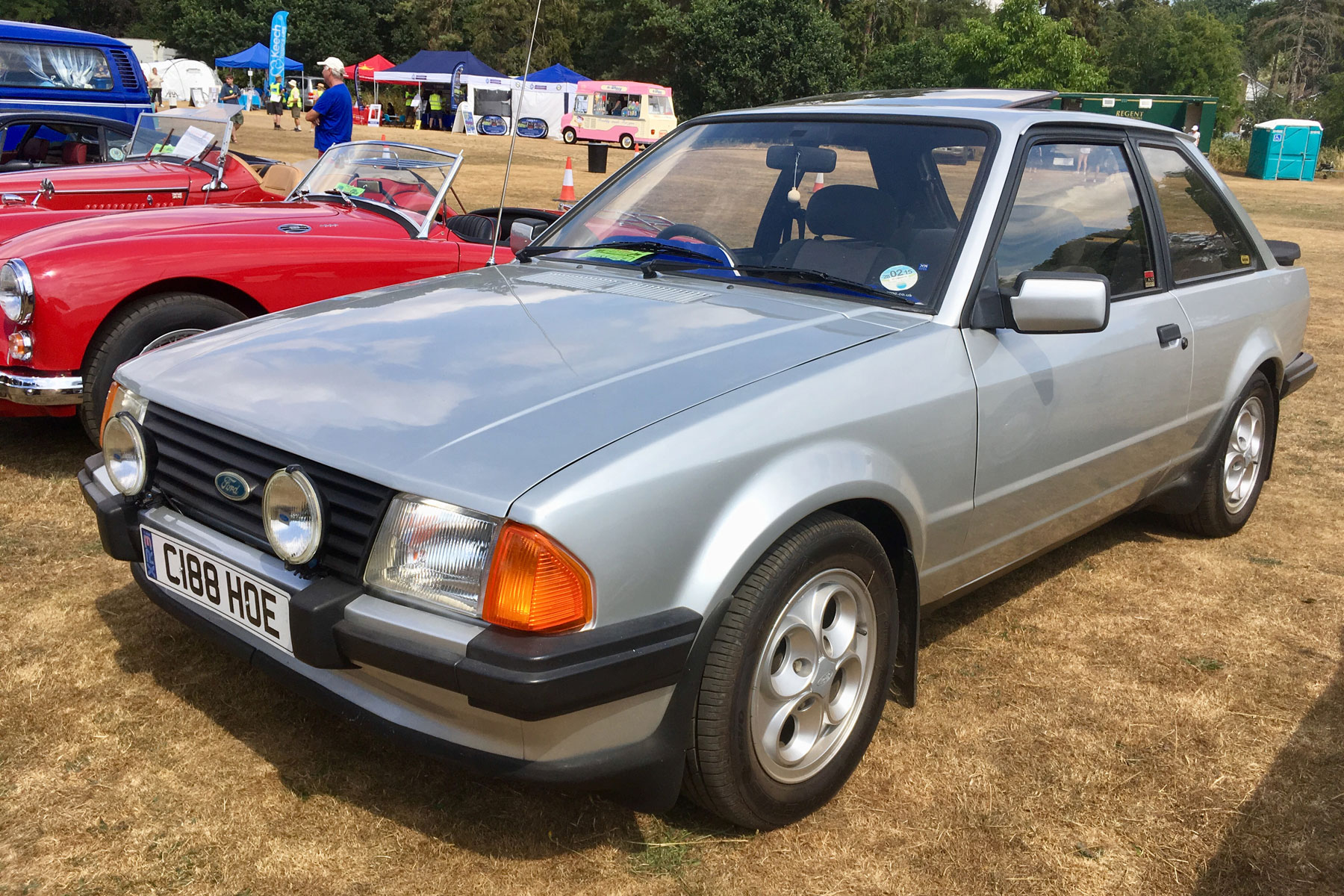
These used to be everywhere. Where I grew up in the 1980s, the Volkswagen Golf GTI was the avant-garde choice for those yuppie city types. In the English Midlands, the XR3i ruled. It was the supercar of suburbia and I was as besotted as everyone else by it.
Not bad for a car with 105hp, rather below even the 118hp of the Golf GTI 8v, and leagues away from the 250hp of today’s Focus ST. . Zero to 60mph in 8.6 seconds was pretty decent for the time, though, and certainly gave the Escort clout in the inevitable traffic light grand prix.
More retro hot hatch action from CotC: Opel Kadett 1.3 SR Rallye. pic.twitter.com/rYB0n6gXIi
— Tim Pitt (@timpitt100) July 25, 2018
This one’s a relatively late one: the Mk4 update was coming, with the rounded nose, body-colour rear spoiler and general appearance of sophistication that really would cement the XR3i’s blue collar desirability. Present and correct are the cloverleaf alloys, the fog lamps and the body-colour paint on the door mirrors. I’d prefer Rosso Red but Strato Silver’s still nice. Yes, it takes me right back, this.
Bradley: BMW 325i (E30)
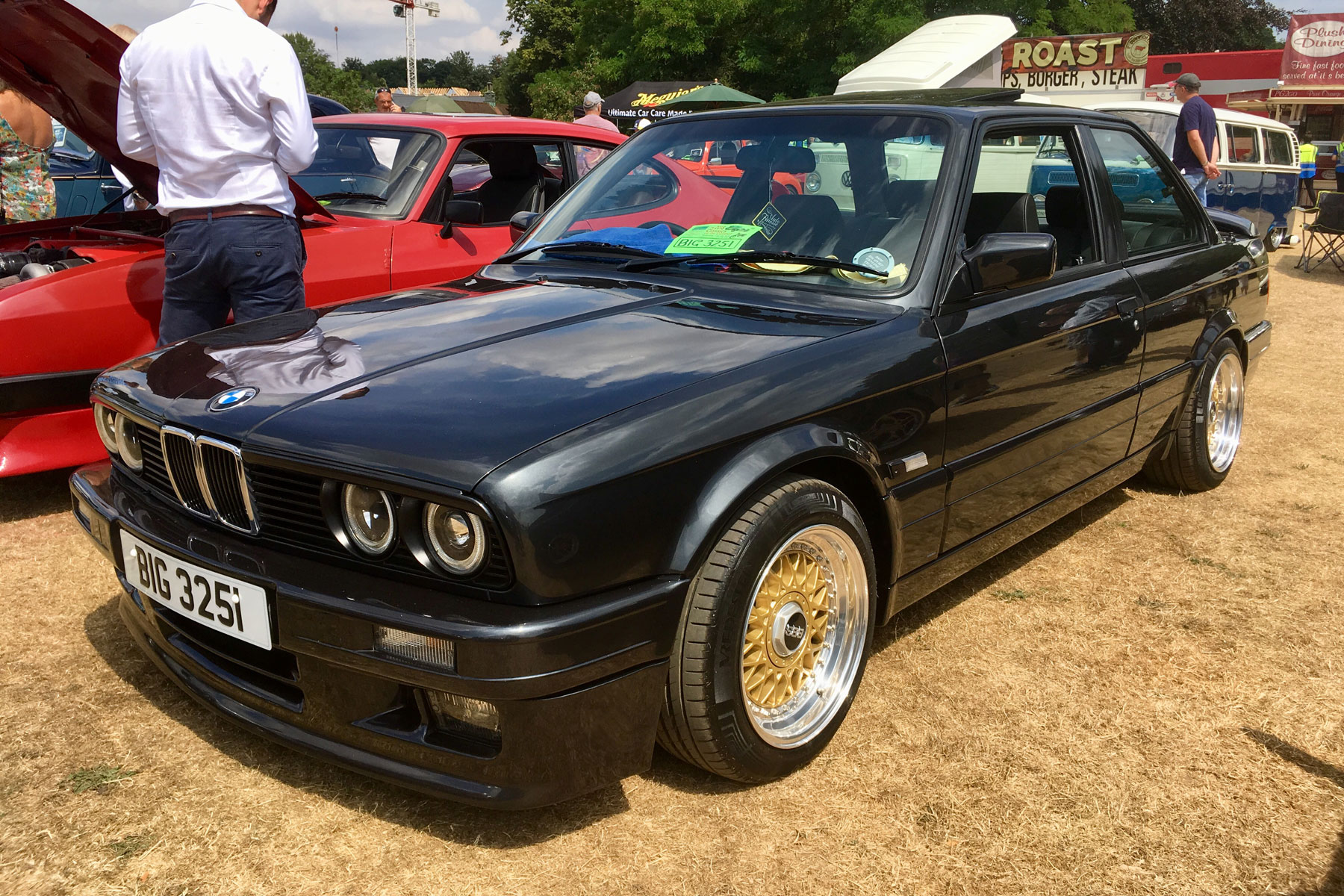
Last but not least, I’ve chosen this attitude-packed BMW 325i. The E30 3 Series is perhaps the classic BMW design, accentuated here by a factory-fit M Sport bodykit and period BBS split-rim alloys. If only the current 3er looked this cool.
Interestingly, the 325i was also available in four-wheel drive ‘iX’ spec and – for the South African market – as the sportier 325iS. The latter car’s 194hp Alpina-tuned engine made it scarcely slower than the contemporary E30 M3 (at least in a straight line).
John M: Chevrolet ‘Advance Design’ Pickup
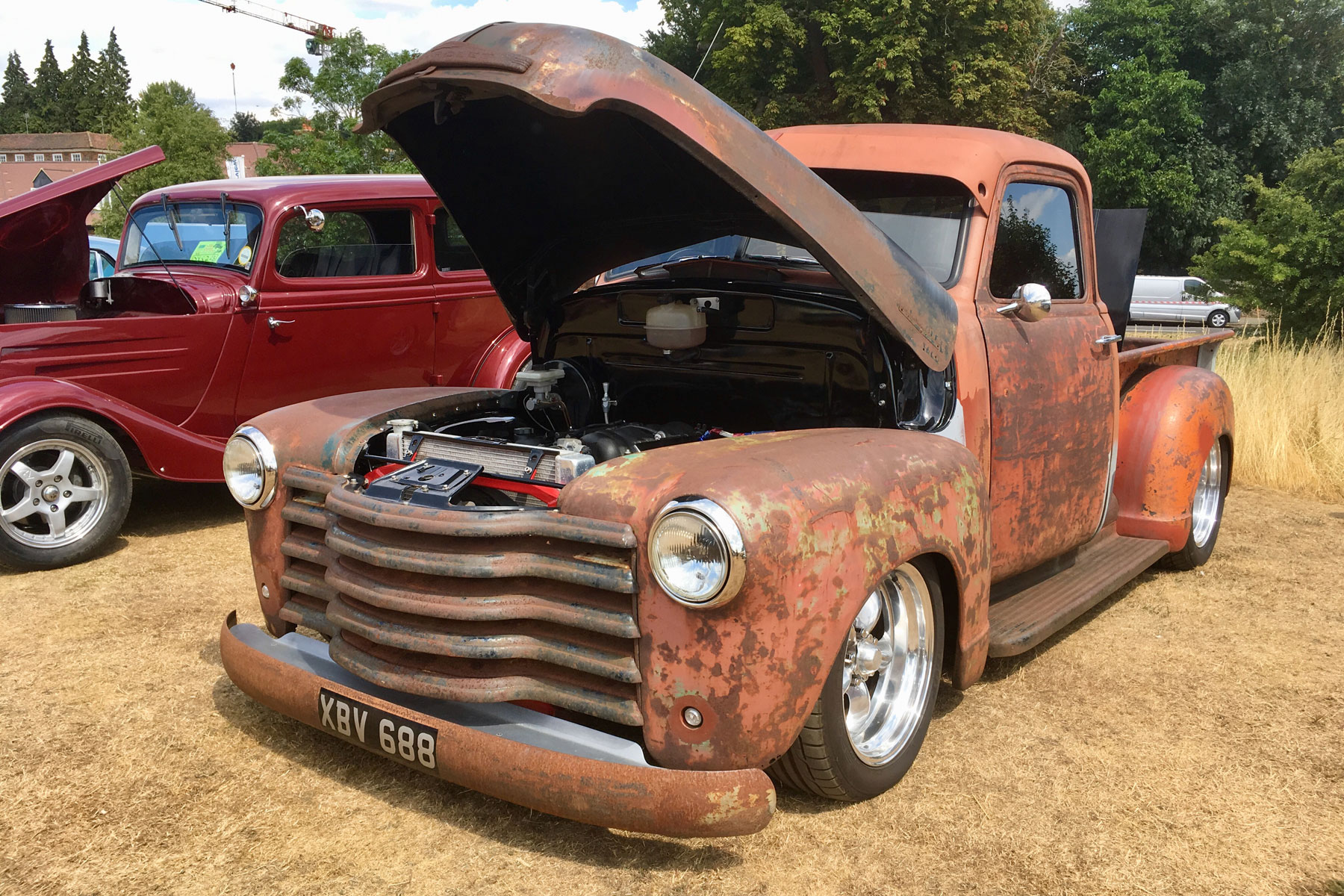
After doing its part for the war effort, Chevrolet resumed production of civilian pickups in 1946 and released the all-new Advance Design series in 1947.
The new truck represented a giant stride forward in both capability and comfort, with a powerful 216-cubic six-cylinder engine that made 78hp and 170lb ft of torque. The cab was quite roomy, with an adjustable bench seat that could fit three people. The dash could accept a radio, and the handsome new truck could even be ordered with a heater/defroster unit.
Advance Design pickups were best-sellers throughout their production run, and remain wildly popular with Americans even today. Especially with a layer of patina like this 1947-1950 model.
Gavin: Iso Grifo
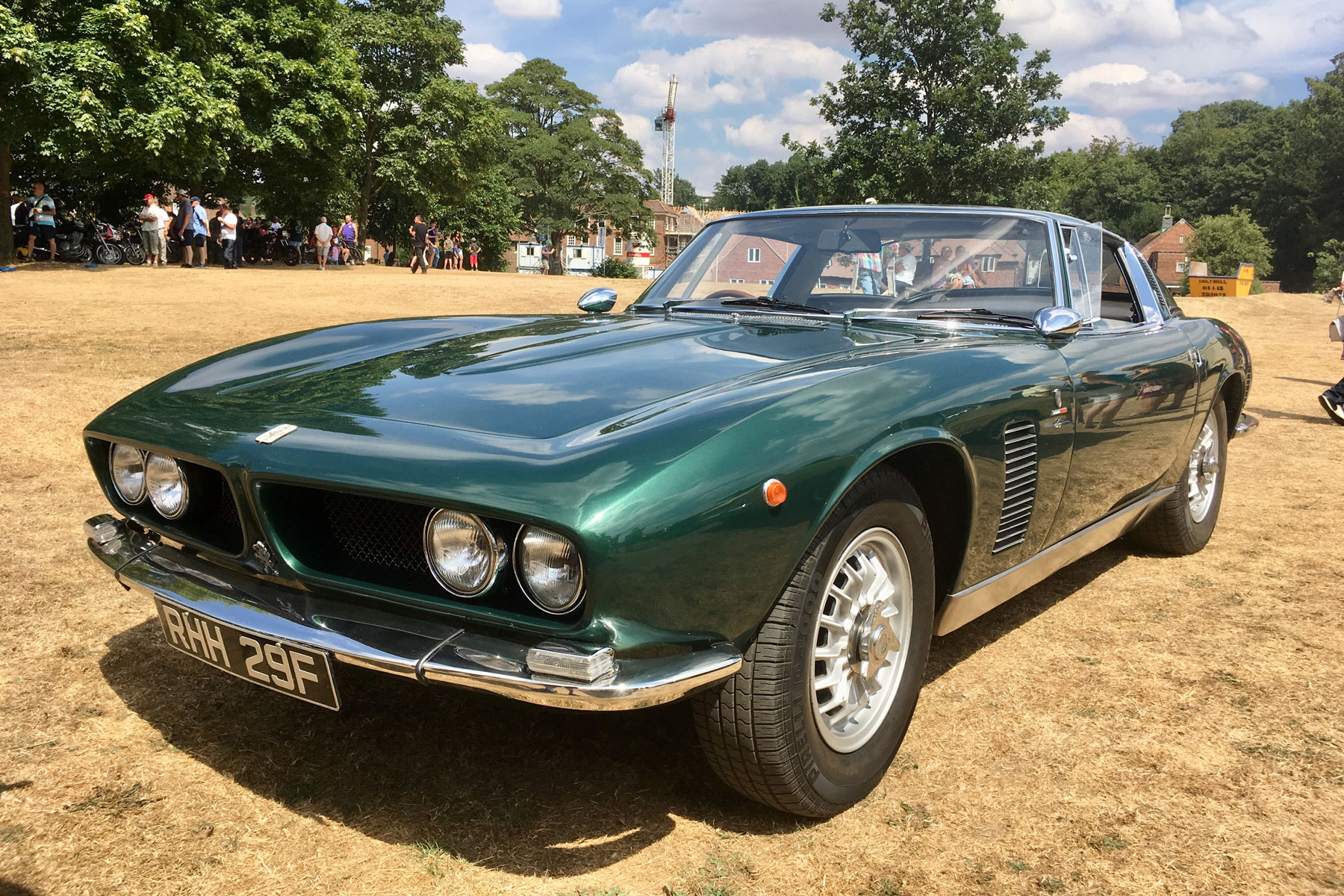
“It is one of the world’s best looking, fastest, two-seaters… remarkable performance figures: top speed almost 165mph (it does 84mph in second and 108mph in third!” The words of Denis Holmes in the Daily Mail. The Giotto Bizzarrini-engineered car was a playboy’s delight, with its exotic Giugiaro-penned styling and American V8 engine.
This is a 1968 example, powered by a 5.4-litre Corvette small-block V8 – later models featured a big-block Chevy V8 and Ford V8 – and it is, perhaps, the most effortlessly stylish car on display in Harpenden. It’s also the absolute antithesis of my other choices.
John R: Chevrolet C3 Corvette Indy 500 Pace Car
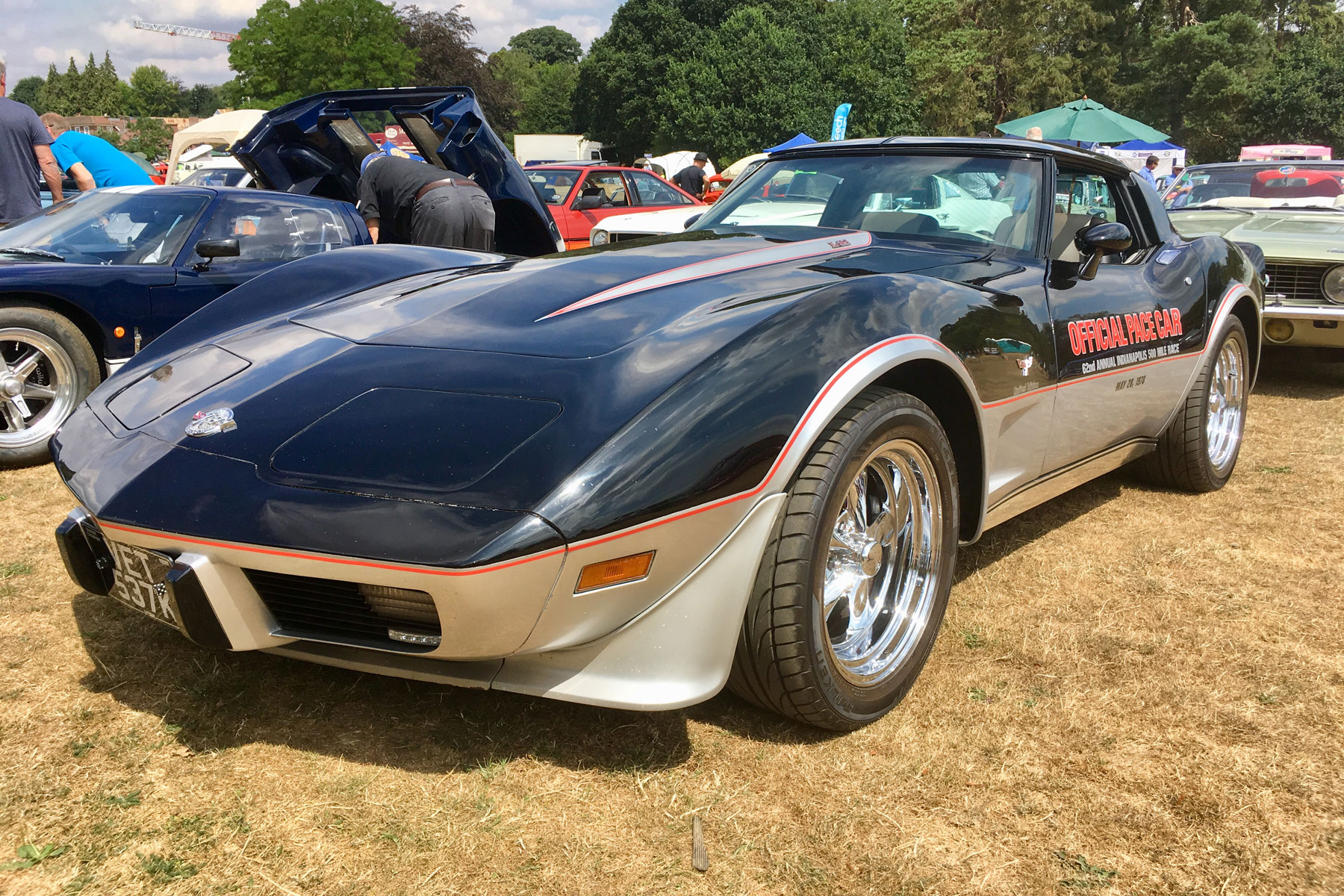
Produced between 1968 and 1982, over 540,000 examples of the third-generation ‘C3’ Corvette rolled off the Chevrolet production line. With a design inspired by fast-swimming mako sharks, the C3 was intended to be more advanced and futuristic than previous ’Vette models. V8 engines were standard throughout, but options ranged from the ‘Small Block’ 5.4-litre unit with 300hp, to the giant 7.4-litre with 460hp.
For 1978 the Corvette was chosen as the pace car for the prestigious Indianapolis 500 race. A special edition was produced, accounting for 15% of Corvettes made that year. The two-tone paintwork was standard, as were silver leather sports seats. Pace car decal stickers were supplied unfitted, leaving the tricky task of lining them up straight to the first owner.